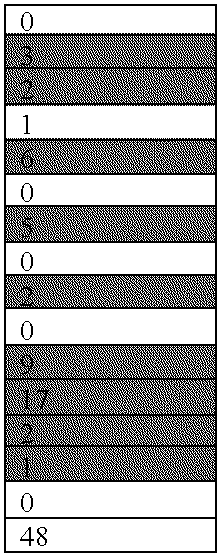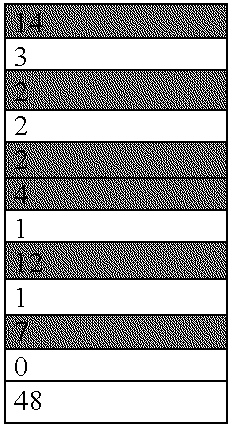Peptides and substances, methods and devices using same for diagnosing and treating neurodegenerative disorders
a neurodegenerative disorder and peptide technology, applied in the direction of antibody ingredients, instruments, material testing goods, etc., can solve the problems of unreliable ad markers, intellectual and personality decline, and unrelentlessly progressive decline of intellectual and personality, and use of amyloid b peptide and tau in the cerebrospinal fluid (csf) each used individually
- Summary
- Abstract
- Description
- Claims
- Application Information
AI Technical Summary
Benefits of technology
Problems solved by technology
Method used
Image
Examples
example 1
Rational
[0151] Structure and characteristics of NF antigens: Since it was shown that a subset of NF--H associated antibodies is present at higher levels in AD than in negative control subjects [Chapman, 1988; Chapman, 1989], one may deduce that the NF--H molecule can be used to detect these antibodies present in blood serum. To do so, one must first characterize the structure of the molecule.
[0152] As taught by Soussan (1996), neurofilaments, a major constituent of the neuronal cytoskeleton, are composed of three different proteins. These subunits are called the heavy (NF--H), the medium (NF-M) and the light (NF-L) proteins, and their approximate molecular masses are 200, 160, and 68 kDa, respectively. All the neurofilament proteins contain a conserved helical rod domain which forms the basis of their polymerization and assembly to 10 nm wide filaments. The remaining carboxy terminal domains of the neurofilament proteins, particularly those of the larger subunits NF--H and NF-M, for...
example 2
Materials and Experimental Methods
[0163] Binding Peptides to a Solid Support:
[0164] Introduction to enzyme linked immunosorbent assay (ELISA): ELISA is a convenient method for measuring concentration of antigens or antibodies in solution. In principle, the substance to be measured is bound to a solid phase and then specifically detected by an enzyme-labeled antibody. The enzyme generates a color reaction, the optical density (OD) of which is proportional to its concentration. Thus, with excess reagents the OD is proportional to the amount of substance bound to the solid phase. To measure antibody concentration in serum it is common to bind an antigen thereof to the solid support. As there are countless numbers of antigens and many kind of solid supports, the variations are endless. However, the most commonly used solid support is polystyrene in the form of a plate with 96 microwells arranged as an 8 by 12 array. The polystyrene can be treated to modify the electrostatic and hydropho...
example 3
Experimental Results
[0177] Optimization of the Protocol:
[0178] The peptide used for optimization was peptide 3M (SEQ ID NO:31). Serum was pooled from 10 AD patients and pretreated with chloroform.
[0179] To maximize binding while minimizing the background the following conditions were optimized: (i) blocking of non-specific binding of IgG; (ii) concentration of the peptide; (iii) buffer-system; (iv) serum concentration range; (v) serum incubation time and temperature; (vi) concentration of the secondary antibody; and (vii) pretreatment of the sera to remove lipids.
[0180] Blocking: The plates were either blocked with 0.5% Gelatin, 1% Caseinate or not blocked, before the addition of peptide. The serum was diluted in PBST and the secondary antibody in PBST containing either 0.5% Gelatin or 1% Caseinate. As seen in FIG. 1, a saturating concentration of the peptide was reached at 0.4-0.8 .mu.g / ml. Accordingly, 1 .mu.g / ml was chosen as a standard working concentration. The different blocki...
PUM
| Property | Measurement | Unit |
|---|---|---|
| pH | aaaaa | aaaaa |
| concentration | aaaaa | aaaaa |
| temperature | aaaaa | aaaaa |
Abstract
Description
Claims
Application Information
 Login to View More
Login to View More - R&D
- Intellectual Property
- Life Sciences
- Materials
- Tech Scout
- Unparalleled Data Quality
- Higher Quality Content
- 60% Fewer Hallucinations
Browse by: Latest US Patents, China's latest patents, Technical Efficacy Thesaurus, Application Domain, Technology Topic, Popular Technical Reports.
© 2025 PatSnap. All rights reserved.Legal|Privacy policy|Modern Slavery Act Transparency Statement|Sitemap|About US| Contact US: help@patsnap.com



